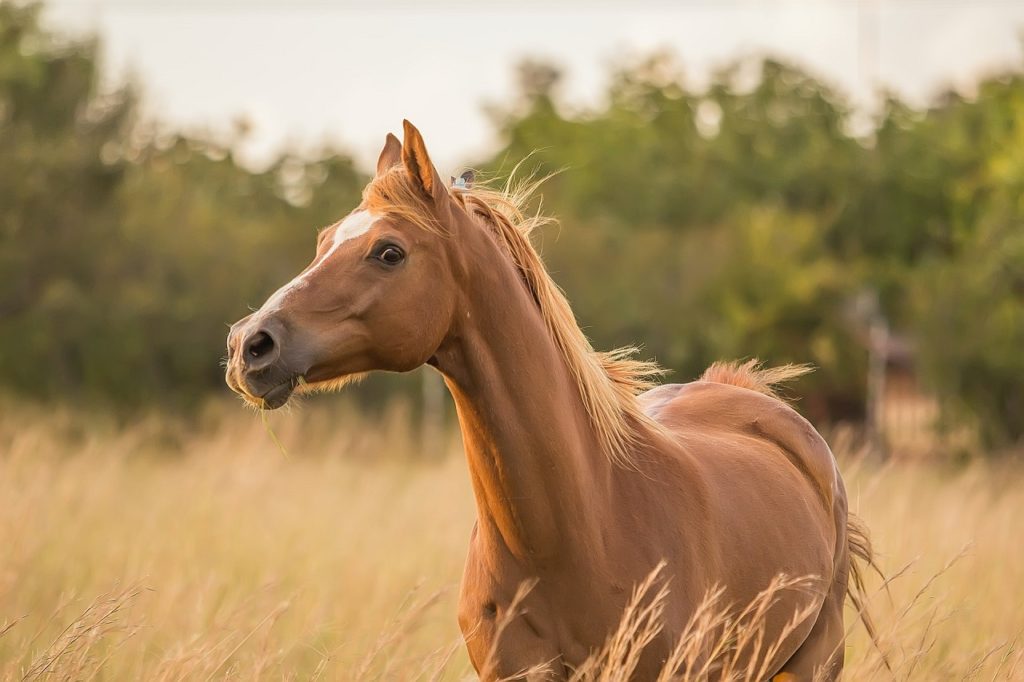Why shot horses with broken feet?

“A horse with a broken leg is hit because it is not possible to recover.” You probably heard of the stereotype. Indeed, the last thing a horse with a broken foot would see in the Wild West could have been the gun of the cowboy that owned it. In fact, there is no need to go back so far, today, horses whose legs or legs are broken are killed in many cases by injection of chemicals such as sodium pentobarbital (euthanasia method).
This is because horses are often used for purposes such as carrying loads or running fast. It is very difficult for a broken or cracked bone to fully heal, with the weight of the people and loads that ride on them, in addition to their heavy body. Therefore, in many cases, a horse whose foot is injured is killed in order not to burden its owner.
In order to end this practice, which sounds extremely barbaric, veterinarians and equinologists (horse scientists) are trying to find an easy treatment method; Unfortunately, it has not been possible to discover a simple solution to date.
Horses legs
Legs are really important for horses. We can see this in the anatomy shaped accordingly in the evolutionary process: 80 of the 205 bones in the body of the horses are on their legs. A large number of joints, bones, ligaments, tendons, cartilage, etc. The piece comes together to make it possible for the speeds that make horses famous and useful. The majority of leg injuries in horses occur in the forefoot; because the front two legs carry around 60-65% of the load.
The only problem affecting the legs of horses is not broken and cracks. At the same time, inflammation, osteoarthritis, joint problems and other diseases can affect the horse’s leg performance. However, what often causes horse legs to be broken or cracked is the couple they eat from another horse, they misread the ground, fall, hang out, etc. They are conditions.
In addition, very tired horses and the condition of a specific horse’s skeletal-muscular system may affect the possibility of fractures and cracks. Similarly, microcracks can grow over time, causing larger cracks and breaks. For example, after the Kentucky Derby held in 2008, the horse named Eight Belles collapsed and then had to be killed by euthanasia. Ethical problems of horse races can also cause the commercialization of horse wounds.
Another factor that makes the healing process of horses difficult is that, unlike people, they cannot be constantly living in the healing process. Horses have evolved to spend most of their days (between 4-15 hours) on all fours, including sleeping.
The main reason for this is that horses are hunting species; Therefore, horses are always ready to escape. In this process, they sleep for several minutes at intervals. In other words, it can be said that horses have polyphasic sleep patterns. An adult horse can gather enough energy by sleeping for just a few minutes to 1-2 hours during the day.
In the meantime, let’s add that horses do not have to stand up to sleep. Many horses can also sleep if they feel safe enough, lying on the ground, especially during REM sleep. However, since horses are large animals, they do not prefer to lie on the ground for a long time, except for short REM sleeps. Otherwise, the blood vessels going to their organs may become blocked and get sick.
In what situation do they “shoot” horses?
Whether or not an injured horse will be killed is a decision left to its owner. If the owner wants to continue looking after the horse, there is no reason to kill a horse whose leg is broken under normal circumstances. However, in many cases, owners choose to kill horses based on the following conditions:
How bad is the fracture?
Not all fractures are of equal size and seriousness. Smaller cracks and fractures can heal completely with the right treatment. In other words, there is no pedestal such as “horses cannot definitely recover”; horses, like any creature, can also recover. In most cases, if the fracture is too deep or the leg is broken at several points, it is preferred that the horses be put to sleep or to be killed.
How old is the horse?
Just like humans, the recovery rate is higher at younger ages in horses. This is because the bones are still in development in young horses. Also, since young horses have a smaller body, they put less strain on fractures or cracks and they have a higher chance of recovery. The horses being housed are in most cases older horses.
Where’s the fracture?
Although a bone is a very solid and continuous organ, not every part of the bone is in the same structure. Therefore, in which part of the bone the fracture is located will also increase the probability of healing. An example of this is the more difficult healing of fractures in the lower parts of the leg. Because there are fewer capillaries in the lower parts of the leg, and therefore the healing process is more difficult. Likewise, the probability of healing after a larger bone fracture is much lower than a smaller bone.
Can the foot broken during horse running be treated? Would a black horse or a brown equine change the situation? These are the answers.
Source: evrimagaci.org
